Here’s the Vox Tone Bender, a great early fuzz pedal that’s sure to please.
The build I’ve done here is the NPN version of the pedal, so it’s slightly different from the original, which used PNP transistors. The big difference here is that this NPN layout allows for negative ground, putting inline with the what’s standard these days; this will work with the 9V power adaptors you’re used to.
The other addition to the original Tone Bender build is the inclusion of a trimmer potentiometer coming out of collector of the second transistor. This was an addition made by Tagboard Effects (where I got the layout). This allows you to adjust the bias of the transistors and therefore the overall gain and therefore fuzz level. Older circuit designs like this often used transistors that you just can’t get anymore, so adjusting the trimmer pot will help you tweak and dial in the exact sound you’re after.
If you like fuzz, Vox’s Tone Bender is a great choice. Like so many fuzz pedals, this one is a good choice for beginners, which is why it’s on my easy DIY guitar pedal builds list. Give this a shot as an early build.
Vox Tone Bender Wiring Schematic
Check out the wiring schematic for the Tone Bender.
Click on the schematic to enlarge it.
And here’s the bill of materials.
| Notes | ||
|---|---|---|
| R1 | 1M | |
| R2 | 47k | |
| R3 | 10k | |
| R4 | 820R | |
| R5 | 1K | |
| C1 | 100nF | |
| C2 | 15uF | 22uF can be used here instead |
| C3 | 47uF | |
| C4 | 4.7nF | |
| Q1, Q2 | Germanium | I used AC176 germanium transistors. 2N series silicon transistors won't work, other silicon transistors may. |
| P1 | 1K Lin | Attack potentiometer |
| P2 | 50K Log | Level potentiometer |
| P3 | 10K trim | |
| Jacks, power supply, etc. | Don't Forget | The stuff you usually use. |
If you’ve built or seen fuzz circuits before, this will look pretty similar! But hey, it works…
One important thing to note here is on the transistors. As mentioned, this is the NPN version of the original circuit. Changing it up to NPN makes it so that this pedal design conforms to modern power paradigms. So, if you wire your power supply the usual way, this circuit will work. Silicon transistors are easier to come across than germanium ones these days, so you’re welcome to try those. That being said, I’ve tried a variety of 2N series silicon transistors and I haven’t been satisfied with any of them (more on this later). You’re welcome to try silicon, but germanium is probably the way to go.
After trying a variety of 2N series silicon transistors, I read that the AC176 may be a good choice here, but these can be harder to come by. I ordered two pairs, one with an hFE of 55 and the other pair with an hFE of 80, and they both worked well. There’s the trim pot that let’s you adjust the gain a bit, so even if you can’t get the right transistor gain, you can adjust the pedal a little bit. But again, silicon transistors don’t sound great in this circuit. Since it’s an older circuit, the sound relies on some degree of leakage from the the germanium transistors. It’s the only way to get this thing to work properly.
Another pointer on this circuit is that the 15uF capacitor for C2 can be replaced with a 22uF. A lot of other circuits use 22uF capacitors, and I always have a few of them handy. 15uF capacitors aren’t used as often, and, for this build, I forgot to buy any! C2 is just an output capacitor, which stabilises the current and voltage, so it shouldn’t affect the tone due to the change.
Feel free to also play around with:
- Add tone control. This thing has a really unique tone to it; it sounds great, but if you want to adjust it, tone control may be the way to go.
- Try different transistors. This will change up the sound of the pedal greatly. There are a lot of choices to play with!
- While you have P1 and the trim pot to adjust the gain for Q2, Q1’s bias isn’t adjustable. Try something different for R3, or even chuck a resistor going to ground below Q1!
Vox Tone Bender Stripboard Layout
As mentioned, fuzz pedals generally don’t use a lot of components, and the Tone Bender is no different. This makes the stripboard layout for it pretty easy! You can see that some of the components are a little crowded in the first half of the board, but they’re actually not hard to solder; it’s a bit of a squeeze on the top of the board, but not on the bottom!
This is the layout from Tagboard Effects, but as usual, I’ve provided both a layout with component numbers and with values, just in case you want to change something up.
Here it is:
Click on the diagram to enlarge it.
My Experience Building The Vox Tone Bender
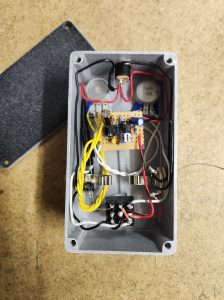 This was a super cruisy guitar pedal build. Fuzz circuits are usually fun and simple builds. The only challenge, of course, was sourcing the right transistors!
This was a super cruisy guitar pedal build. Fuzz circuits are usually fun and simple builds. The only challenge, of course, was sourcing the right transistors!
When trying the silicon transistors, I couldn’t settle on the level for the trim potentiometer because the pedal always sounded like garbage. It sounded fantastic on certain levels of gain, but not great on others (more on that later). The trim pot takes away some of the gain, which can be a good thing, but then you’re losing the full brunt of the pedal.
Once I installed the AC176s I bought, it was just a matter of finding the right trim pot level for the the transistor’s specific gain. I ended up using the hFE 80 pair of transistors and found that allowing full gain sounded great, but the sustain was getting a little truncated at times. I dialled things back a little bit and found a sweet spot that still allowed for tons of Tone Bender fuzz when cranked all the way, but still plenty of sustain.
How Does The Vox Tone Bender Sound?
This is a real classic fuzz. I recently made a Harmonic Jerculator which had some great tone to it, but, since the Tone Bender predates the Harmonic Percolator (which the Jerculator is based on) by about a decade, it just has that more raw sounds. And, of course, it’s very 1960’s. There’s something about the specific tone that comes through a pedal like this that just can’t be described. It’s different from so many other pedals out there, and it really shows the magic of fuzz.
With 2N series silicon transistors, I found higher gain transistors like the 2n5088 with the trim pot turned up all the way had some potential at mid-range levels, but at lower levels there was virtually nothing and at higher levels there’s a bit of a buzz behind the fuzz which isn’t great. It showed the potential for the pedal, but clearly not right.
When I finally got the right transistors (the AC176’s), a lot of bass was pulled out of the pedal, giving a really concise fuzz. There are a ton of overtones coming through, but everything still sounds in place without really distorting the sound. It works well for riffs but still good for strumming too.
As mentioned, in my research into the right transistors, I’ve read that circuits like this depend on germanium transistors being relatively imperfect and having a certain degree of leakage; it’s the key to what gives this pedal its sound.
Like a lot of simple early pedals (and modern guitar pedals for that matter), there’s a lot that you can do with the Tone Bender that doesn’t involve adjusting the pedal itself. Lowering the guitar’s volume (and therefore the input signal into the pedal) takes away a lot of the distorted aspects of the sound without changing much of the organic feel to it. Pickup selection also does quite a lot to change the sounds coming from this thing.
Overall, the Vox Tone Bender is a really simple guitar pedal to build, but it sounds great. I’ve made some more complicated pedals, but this is one of the best sounding ones.
Related posts:
 Escobedo Harmonic Jerculator On Stripboard
Escobedo Harmonic Jerculator On Stripboard
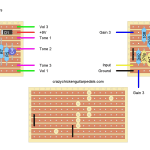 Lovepedal Purple Plexi On Stripboard
Lovepedal Purple Plexi On Stripboard
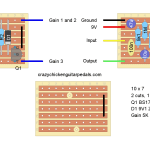 ZVEX Super Hard On On Stripboard
ZVEX Super Hard On On Stripboard
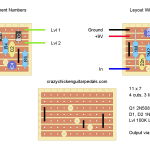 Lovepedal Champ On Stripboard
Lovepedal Champ On Stripboard
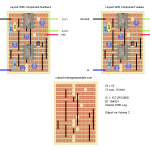 EarthQuaker Devices Acapulco Gold On Stripboard
EarthQuaker Devices Acapulco Gold On Stripboard
 Greer Amps Green Giant On Stripboard
Greer Amps Green Giant On Stripboard
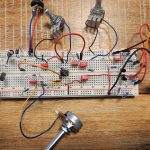 Building And Modding A Tube Screamer On A Breadboard
Building And Modding A Tube Screamer On A Breadboard
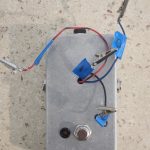 How To Make A Guitar Pedal Tester And Audio Probe
How To Make A Guitar Pedal Tester And Audio Probe
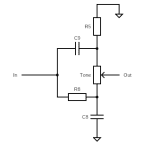 Understanding Mid-Scoops And The Big Muff Tone Circuit
Understanding Mid-Scoops And The Big Muff Tone Circuit
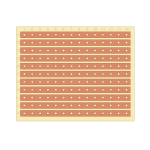 What Is Stripboard And How Do You Read Layouts?
What Is Stripboard And How Do You Read Layouts?



